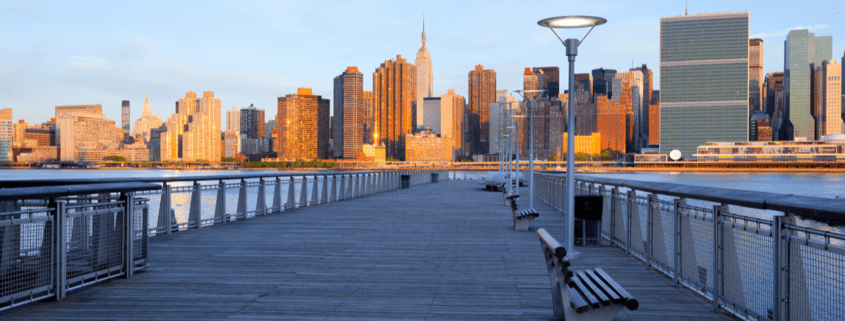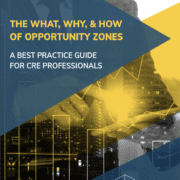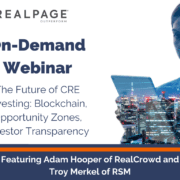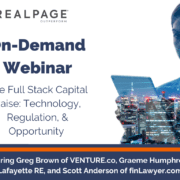CRE Lessons from Amazon’s Search for HQ2
The country-wide bid for Amazon’s HQ2 location caused quite the CRE stir, perhaps only outshined by its Queens, New York, withdrawal on Valentine’s Day 2019. The selection process was highly publicized and competitive, with 238 cities offering millions in incentives to attract the world’s most valuable public company.
Ultimately, Amazon decided to split its HQ2 project between Queens, New York, and Arlington County, Virginia. While some backlash from left-wing groups was expected, NYC politicians and the public decried the move so severely that Amazon called off the project altogether. The entire affair has been touted as disastrous for the tech giant, but what insights can these challenges offer to CRE professionals?
Incentives
Large-scale deals like Amazon’s HQ2 have the potential to bring thousands of jobs into economically-strained communities. Further, they provide a natural boost to the local economy that does not involve welfare and directly benefits the population. So, why the outcry? Much of the dissent from residents was grounded in the fear that the means are more costly than the ends. Attracting big-name companies like Amazon requires more than just ample space and a waiting workforce. In the case of HQ2, the state of New York offered the tech giant nearly three billion dollars in incentives and subsidies.
But what’s wrong with incentives? After all, these offers can be crucial to bringing strong, thriving businesses to cities where their presence can benefit the job market. In fact, Amazon HQ2 would have generated an estimated $27.5 billion in state and city revenue over 25 years, which is a 9:1 ratio of revenue to subsidies received. Unfortunately, many residents do not understand the economic implications of these interactions between local governments and corporations, and they feel the funds “lost” to such companies through subsidies could be put to better use improving infrastructure or otherwise strengthening economic development. Activists opposing HQ2 saw dollar signs circling the drain while failing to recognize that the figures in play reflect value over time.
Takeaway: When such differences of public opinion arise, it is important to get residents to see how a deal will bring positive change to their communities. CRE professionals making deals in unfamiliar markets may want to connect with a public relations professional to help ease transitions and educate the public about the benefits of a project.
Opportunity Zones
Some 8,700 federally designated low-income areas will attract an estimated $200 billion in investment capital in the next several years. This new investment opportunity has been generating a lot of attention recently in the CRE space, particularly due to the attractive tax breaks and incentives. These designated zones also have the potential to transform economically-distressed areas. In the case of Amazon, New York City mayor Bill de Blasio hailed the deal as an astounding return on investment. “In the public sector, we don’t measure success in corporate profits,” he said. “We measure success in how many everyday people benefit.”
However, things don’t always go according to plan. Although their potential is great, the HQ2 blunder calls for a strategic and measured approach to opportunity zone development. Because these possibly lucrative opportunities are located in distressed communities, there is an increased possibility of backlash from residents fearing the effects of gentrification. When local politicians get involved, these projects can garner more widespread attention and either positive or negative press depending on community involvement and attitudes.
Takeaway: Keeping a pulse on community dynamics and weighing their impact in the decision-making process can keep deals from going south after they’ve been announced. Opportunity Zones have potential, but public attitudes should be considered and every effort made for positive community engagement to address sensitivities regarding gentrification concerns.
Media Matters
It’s not always possible to keep a low media profile on a high-profile deal, and media often influences the public, even to the point of protest. When the press is involved it often feels like all eyes are on you, and to an extent this is true.
Being in the public eye requires CRE professionals to consider how everyday people conceptualize their roles and deals. To many, deals are like living beings, with traits attributed to them such as helpful or unfair. Protesters use social media to organize and grow support, so in cases such as Amazon, this concept spread rapidly and created a unified, dissenting group of individuals. News coverage also plays a role in establishing public perception, but the news sources of the professional world are not necessarily the same as local networks. And pressure for high ratings may drive media outlets to play up points of contention surrounding a deal.
In the case of HQ2, cities faced mounting pressure to make their incentive offers public, and those that didn’t comply faced scrutiny. The media painted these cities as corrupt entities pandering to corporations, and people took the bait. Cities that did release their deal bids were similarly judged in the same way. This no-win scenario for the deal process also has the potential to impact the project itself. Protests at build sites, news presence, and grassfire social media movements can cause slowdowns that impact profitability. Despite this obstacle, it is possible to engage with the media in a positive way and to alter public perception if the proper channels are leveraged.
Takeaway: Tread carefully when extensive media coverage is involved in the deal stage. High profile clients like Amazon attract a lot of attention, and public dissent presents an additional obstacle to getting deals done. But you can also leverage media to your advantage. Don’t wait to respond to potential negativity. Instead, publicize that you are eager to partner with the community to create growth and opportunity, and the public may be as excited about your project as you are.
While Amazon’s New York HQ2 bid may have ended in shambles, the highly-publicized outcome provided an opportunity to assess what unseen obstacles may present themselves as the CRE landscape continues to develop and to greet these challenges well-prepared. Additionally, the local outcry the project faced illustrates how little the public understands the economic benefit of large-scale development and corporate presence, allowing for the evaluation of public relations strategy and a move toward a more compassionate and education-based community collaboration.











